Overview
Embark on a journey that will awaken your senses and transform your perspective. Our 9-day Morocco tour from Fes is not just a vacation; it's a passage through time, culture, and breathtaking landscapes. From the moment you step into the labyrinthine medina of Fes, you'll be transported to a world where ancient traditions blend seamlessly with the rhythm of modern life.
Imagine the scent of spices wafting through narrow alleys, the sound of the muezzin's call echoing across terracotta rooftops, and the feel of handwoven carpets beneath your feet.
This carefully crafted adventure will take you from the intellectual heart of Morocco to the vast, golden dunes of the Sahara, through rugged mountain passes, and into the vibrant chaos of Marrakech. Along the way, you'll sleep under star-studded desert skies, sip mint tea with Berber nomads, and uncover the secrets of Morocco's imperial cities.
Whether you're a culture enthusiast, a thrill-seeker, or a romantic soul searching for inspiration, this tour promises to deliver the authentic, immersive Moroccan experience you've been dreaming of. Prepare to challenge your preconceptions, indulge your curiosity, and create memories that will linger long after the desert sand has been shaken from your shoes.
Your Moroccan odyssey begins here, in Fes, where every cobblestone tells a story, and every day brings a new adventure.
Duration: 9 days/8 nights
Itinerary: Fes to Marrakech

Price: Check Bellow
Tour availability: Everyday
Highlights of the 9 days tour from Fes
Fes Medina: UNESCO World Heritage site, Al-Qarawiyyin University, Bou Inania Madrasa, Chouara Tannery.
Volubilis: Ancient Roman ruins with intricate mosaics.
Meknes: Bab Mansour, granaries, and imperial history.
Merzouga & Sahara Desert: Erg Chebbi dunes, camel treks, luxury desert camp.
Todra Gorge: Towering limestone cliffs and scenic landscapes.
Dades Valley: Valley of a Thousand Kasbahs and the serpentine road.
Ait Benhaddou: Iconic UNESCO site and film location.
High Atlas Mountains: Tizi n'Tichka pass, dramatic landscapes.
Marrakech: Koutoubia Mosque, Bahia Palace, Jardin Majorelle, vibrant souks.
Itinerary of Fes Tour 9 Days to Marrakech:
Day 1: Arrival in Fes
Welcome to Fes, the cultural and spiritual nucleus of Morocco! As you touch down in this ancient city, prepare for a sensory awakening like no other. Your journey begins the moment you step off the plane, greeted by the warm Moroccan air and the promise of adventure. A private transfer whisks you through the new city, offering glimpses of modern Morocco before plunging into the heart of the old medina. Here, time seems to stand still.
Your home for the next two nights is a beautifully restored riad, a traditional Moroccan house built around a central courtyard. Marvel at the intricate zellij tilework, carved cedar wood ceilings, and the tranquil fountain that forms the centerpiece of this architectural gem. Take a moment to refresh and unwind, perhaps with a glass of sweet mint tea on the rooftop terrace, where the panoramic views of Fes will take your breath away.
As the day melts into evening, venture out for your first taste of Moroccan cuisine. In a local restaurant, hidden within the labyrinthine streets, you'll be introduced to the flavors that will accompany you throughout your journey. Savor the complex spices of a traditional tagine, tear into freshly baked khobz bread, and let the aromas transport you to another era.
After dinner, take a leisurely stroll through the lamp-lit alleys of the medina. The nighttime transformation of Fes is magical – the bustle of day gives way to a hushed tranquility, broken only by distant calls to prayer and the soft murmur of locals enjoying the cool evening air. This gentle introduction to Fes sets the stage for the adventures to come, whetting your appetite for the cultural feast that awaits in the days ahead. Return to your riad, where dreams of flying carpets and ancient medinas will surely fill your first night in this enchanting land.
Day 2: Exploring the Fes Medina
Wake to the gentle sound of the call to prayer echoing across the rooftops of Fes. Today, you'll dive deep into the heart of the medina, a UNESCO World Heritage site and the world's largest car-free urban area. After a breakfast of fresh fruit, flaky pastries, and aromatic coffee on your riad's sunlit terrace, meet your local guide – a font of knowledge and your key to unlocking the secrets of this ancient city.
Step into the labyrinth of the medina, where over 9,000 narrow alleys wind their way through history. Your senses come alive as you navigate the bustling souks. Breathe in the heady scent of spices piled high in colorful mounds, listen to the rhythmic tapping of copper artisans at work, and feel the soft leather of handcrafted goods.
Your journey through time takes you to the Al-Qarawiyyin University, founded in 859 AD and recognized as the oldest existing educational institution in the world. Marvel at its intricate architecture and ponder the centuries of knowledge that have passed through its doors. Next, the Bou Inania Madrasa awaits, a masterpiece of Marinid architecture where sunlight dances across ornate stucco and cedar wood carvings.
As midday approaches, brace yourself for one of Fes's most iconic experiences – a visit to the Chouara Tannery. From a terrace overlooking the colorful dying pits, witness a process that has remained unchanged for centuries. The pungent smell of the tanneries is as much a part of the experience as the visual spectacle – your guide will offer a sprig of mint to hold under your nose, a time-honored tradition.
After a lunch of local delicacies in a hidden gem of a restaurant, continue your exploration. Weave your way through the Jewish Quarter, or Mellah, with its distinctive architecture and synagogues, testament to the city's diverse history. As the afternoon light softens, find yourself in the courtyard of a local artisan's workshop. Here, watch in awe as skilled hands bring Moroccan crafts to life, from intricate metalwork to vibrant textiles.
As dusk falls, return to your riad to freshen up before embarking on a culinary adventure. Tonight, roll up your sleeves for a hands-on cooking class where you'll learn the secrets of Moroccan cuisine. Under the guidance of a local chef, create your own tagine, master the art of couscous, and discover the blend of spices that give Moroccan food its distinctive flavor. Cap off the evening by enjoying the fruits of your labor on a candlelit rooftop, the lights of the medina twinkling below, as you reflect on a day filled with sensory delights and cultural revelations.
Day 3: Day Trip to Volubilis and Meknes
Rise early to embark on a journey through Morocco's imperial past. Today's adventure takes you beyond Fes to explore the ancient ruins of Volubilis and the grand city of Meknes. As your comfortable vehicle winds through the countryside, watch the urban landscape give way to rolling hills and olive groves.
Your first stop is Volubilis, a UNESCO World Heritage site that stands as a testament to the far-reaching power of the Roman Empire. As you approach, the magnificent arches and columns emerge from the landscape, a striking contrast to the surrounding farmland. Walk in the footsteps of ancient Romans along remarkably preserved streets, marveling at the intricate mosaics that have withstood the test of time. Your guide will bring the ruins to life, painting vivid pictures of the bustling city that once stood here. Climb to the Capitol and the Basilica for panoramic views of the Moroccan countryside, and imagine the scene two millennia ago when this was the western limit of Roman power.
Next, journey to the nearby holy town of Moulay Idriss. Perched dramatically on a hillside, this picturesque town is a important pilgrimage site for Muslims. Take in the unique split minaret of the main mosque and soak in the peaceful atmosphere of this sacred place. If you're feeling adventurous, wind your way through the narrow streets to find a local cafe for a refreshing mint tea and a taste of small-town Moroccan life.
The afternoon brings you to the imperial city of Meknes, often overshadowed by its more famous neighbors but no less impressive. Enter through the monumental Bab Mansour gate, considered one of the finest in North Africa. Inside, discover a city that blends Spanish and Moorish styles with its own Moroccan flair. Explore the vast granaries and stables built to support Sultan Moulay Ismail's 12,000 horses, a testament to the ambition and grandeur of his reign.
As the day winds down, make your way to the Meknes medina. Here, the pace is noticeably calmer than in Fes, offering a chance to practice your newly acquired haggling skills in a more relaxed environment. Perhaps pick up some locally crafted metalwork or leather goods as souvenirs of your imperial city tour.
Return to Fes as the sun sets, the countryside bathed in golden light. This evening, take time to relax in your riad, perhaps enjoying a soothing hammam experience to rejuvenate after a day of exploration. Over dinner, reflect on the layers of history you've uncovered, from Roman times through the great Moroccan dynasties, each leaving its mark on this fascinating land. As you settle in for the night, let the echoes of ancient civilizations and the promise of desert adventures to come fill your dreams.
Day 4: Journey to the Sahara
As dawn breaks over Fes, prepare for an epic journey that will take you from the cultural heartland of Morocco to the edge of the Sahara Desert. This day of transition will see landscapes shift dramatically, cultures blend, and your understanding of Morocco's diversity deepen.
Departing early, your route winds through the Middle Atlas Mountains. Watch as cedar forests replace city skylines, and Barbary macaques occasionally appear along the roadside. Your first stop is Ifrane, often called "Little Switzerland" for its Alpine-style architecture. This surreal slice of Europe in Africa offers a moment to stretch your legs and marvel at the unexpected.
Continuing south, the landscape gradually transforms. Lush forests give way to barren hills, then to the starkly beautiful pre-Saharan terrain. Break for lunch in Midelt, known for its fossils and minerals. Here, savor a traditional Berber meal, perhaps a hearty tajine, fueling up for the adventures ahead.
As you approach the Sahara, anticipation builds. The afternoon drive takes you through the Ziz Valley, where a green ribbon of palm oases cuts through the increasingly arid landscape. Stop at a panoramic viewpoint to take in the breathtaking vastness of the valley, dotted with ancient kasbahs and surrounded by red-hued cliffs.
Arrive in Merzouga, the gateway to the Sahara, as the afternoon light turns the landscape golden. Here, trade your vehicle for a more desert-appropriate mode of transport – the camel. As you mount these ships of the desert, feel the weight of modern life slip away. Your camel train sets off across the dunes, the soft shuffle of their feet in the sand the only sound breaking the desert silence.
Watch in awe as the sun begins to set, painting the sky in a palette of oranges, pinks, and purples. The dunes of Erg Chebbi, some towering over 150 meters high, cast long shadows across the sand, creating a mesmerizing play of light and texture.
As twilight deepens, arrive at your luxury desert camp nestled among the dunes. Your Berber hosts welcome you with traditional mint tea and dates. Settle into your well-appointed tent, a surprising oasis of comfort in this remote setting. Before dinner, take a moment to climb the nearest dune. As darkness falls, witness the Sahara's most spectacular show – a night sky ablaze with stars, unobstructed by light pollution and seemingly close enough to touch.
Dinner is served under a canopy of stars – a feast of Moroccan specialties prepared by your camp's skilled chefs. As you dine, let the haunting sounds of Berber music transport you. After dinner, gather around the campfire for storytelling and stargazing, the Milky Way a brilliant swath across the sky. Tonight, as you drift off to sleep in your desert abode, the vastness of the Sahara and the profound silence of the desert will leave an indelible mark on your soul.
Day 5: Desert Experience in Merzouga
Wake before dawn to witness one of nature's most spectacular shows – a Saharan sunrise. Climb to the crest of a nearby dune, the cool sand between your toes, and watch in awe as the first rays of light paint the landscape in hues of gold and rose. This moment of tranquil beauty sets the tone for a day of desert discovery and adventure.
After a hearty breakfast at the camp, immerse yourself in the Saharan way of life. Join a local Berber family in their nomadic encampment, where you'll gain insights into their age-old traditions and adaptations to desert living. Try your hand at traditional bread baking, learn about medicinal desert plants, and share tea and stories with your hosts. This genuine cultural exchange offers a rare glimpse into a lifestyle that has remained largely unchanged for centuries.
As the day heats up, cool off with a visit to the refreshing waters of a desert oasis. Here, surrounded by lush palms, you'll find respite from the sun and perhaps spot desert wildlife coming to drink. Take a moment to reflect on the stark contrast between the verdant oasis and the surrounding sea of sand.
For the adventurous, the afternoon brings the option of sandboarding down the mighty dunes of Erg Chebbi. Feel the rush of adrenaline as you surf the sandy slopes, the fine grains spraying in your wake. If you prefer a more relaxed pace, take a guided nature walk to learn about the desert ecosystem, discovering how life adapts to this extreme environment.
As the afternoon cools, embark on a thrilling 4x4 excursion deep into the desert. Your skilled driver will navigate the undulating dunes, offering heart-pumping moments as you crest ridges and descend into sandy valleys. Stop to visit the Gnawa people in Khamlia, a group known for their soulful music with roots in sub-Saharan Africa. Let the hypnotic rhythms and melodies transport you as you enjoy a performance of traditional Gnawa music.
Return to camp for a sunset camel trek, venturing out to a secluded spot among the dunes. Here, surrounded by the vastness of the Sahara, watch the sun dip below the horizon, transforming the desert into a dreamscape of long shadows and soft light. This serene moment offers a chance for reflection on the day's experiences and the timeless beauty of the desert.
Back at camp, a special dinner awaits. Dine on Moroccan specialties prepared in the traditional method of Medfouna, or "Berber pizza," slow-cooked in the sand. After dinner, join your Berber hosts for an evening of storytelling and music around the campfire. As you gaze at the star-studded sky, let the ancient tales and haunting melodies of the desert wash over you, creating memories that will last a lifetime.
As you retire to your tent, the profound silence of the desert envelops you. Tonight, sleep comes easily, lulled by the gentle desert breeze and the promise of new adventures to come. Your day in Merzouga has not just been a visit to the desert, but a journey into the heart of Saharan life and culture.
Day 6: Todra Gorge and Dades Valley
Bid farewell to the Sahara as you embark on a day of dramatic landscape transitions. Rise early to catch the soft morning light on the dunes before departing your desert sanctuary. As you journey west, watch the terrain shift from expansive sand seas to rocky hamada, then to lush oases nestled in deep valleys.
Your first stop is the awe-inspiring Todra Gorge. As you approach, marvel at how the massive rock walls seem to close in, creating a natural corridor of towering limestone cliffs. These sheer rock faces, some rising over 300 meters, appear to change color with the moving sun, shifting from golden to deep red. Take a leisurely walk through the gorge, feeling dwarfed by nature's grandeur. Listen to the babbling stream that has carved this wonder over millennia and watch skilled rock climbers tackle the challenging faces – a testament to the gorge's reputation as a world-class climbing destination.
Pause for lunch at a local cafe perched on the edge of the gorge. Here, savor traditional Berber dishes while drinking in the spectacular views. This is the perfect spot to reflect on the diverse landscapes you've experienced in just a few short days.
As you continue your journey, the road winds through a series of lush palmeries and mud-brick villages, each one a vibrant splash of green against the stark mountain backdrop. You're entering the Dades Valley, often referred to as the "Valley of a Thousand Kasbahs." Keep your camera ready as you pass ancient fortified villages and crumbling kasbahs, their earthen walls glowing warmly in the afternoon light.
The highlight of the afternoon is the serpentine Dades Gorge road. As your vehicle carefully navigates the tight switchbacks, you'll be treated to ever-changing vistas of the rugged valley below. Stop at a panoramic viewpoint to fully appreciate the road's precarious path and the stunning rock formations known as "monkey fingers" due to their distinctive shape.
Arrive at your accommodation for the night, a charming auberge nestled in the heart of the valley. Take time to unwind on the terrace, watching the sun set behind the craggy peaks, painting the sky in a palette of warm hues. The tranquil sound of the Dades River provides a soothing backdrop as you sip on a glass of Moroccan mint tea.
As evening falls, join a local family for a home-cooked meal. This intimate experience offers a chance to connect with Moroccan hospitality at its most genuine. Learn about life in the valley as you share a meal of hearty tagine, freshly baked bread, and seasonal vegetables from the family's garden. The warmth of your hosts and the flavors of their traditional cuisine provide the perfect closure to a day filled with natural wonders.
Before retiring for the night, step outside to gaze at the star-filled sky. The lack of light pollution in this remote area reveals a celestial display that rivals even that of the Sahara. As you drift off to sleep, let the gentle murmur of the river and the silhouettes of ancient kasbahs against the moonlit sky fill your dreams, a fitting end to a day that has traversed the very soul of Morocco's diverse landscape.
Day 7: Ait Benhaddou and High Atlas Mountains
Greet the day with anticipation as you prepare for a journey through time and across Morocco's most dramatic mountain range. After a breakfast of local honey, fresh bread, and aromatic coffee, bid farewell to the Dades Valley and set out for Ait Benhaddou.
As you approach this ancient fortified village, its earth-colored towers rising dramatically against the azure sky, it's easy to understand why it's been the backdrop for countless films and TV shows. A UNESCO World Heritage site, Ait Benhaddou stands as the most spectacular ksar (fortified village) in Morocco. Cross the shallow river on stepping stones or by mule-back, feeling like an explorer from another era as you enter the village gates.
Wander through the narrow alleys, marveling at the intricate architecture of this 11th-century marvel. Climb to the top of the hill for a panoramic view of the surrounding landscape, the oasis below a stark contrast to the arid mountains beyond. Your guide will share tales of the caravans that once stopped here on their epic journeys across the Sahara, laden with gold, silver, and spices.
After exploring Ait Benhaddou, continue to nearby Ouarzazate, known as the "Hollywood of Africa" for its famous film studios. Take a brief tour to see how this stark landscape has been transformed into ancient Rome, Egypt, and even Westeros for various productions.
As midday approaches, begin your ascent into the High Atlas Mountains. The road ahead is the famous Tizi n'Tichka pass, a masterpiece of French colonial engineering. As you climb higher, watch the landscape change dramatically – barren rock gives way to lush valleys, and snow-capped peaks appear on the horizon.
Stop for lunch at a local mountain restaurant, where you can sample traditional Berber cuisine with a view that will take your breath away. Try the tangy chermoula-spiced lamb or a warming harira soup, perfect fuel for the journey ahead.
The afternoon drive offers a visual feast as you traverse the highest major mountain pass in North Africa. Each hairpin turn reveals new vistas more stunning than the last. Your driver will stop at strategic points, allowing you to fully absorb the majesty of the mountains and capture photos of the breathtaking scenery.
As you descend the northern slopes of the Atlas, notice how the vegetation becomes more lush, hinting at the fertile plains that surround Marrakech. The light takes on a golden quality as you approach your final destination for the day.
Arrive in Marrakech as the sun begins to set, the ancient red walls of the medina glowing in the fading light. Your riad for the night is an oasis of calm in the bustling heart of the old city. After checking in, take a moment to refresh and unwind from the day's journey.
As evening falls, venture out for your first taste of Marrakech's famous Djemaa el-Fna square. This UNESCO-recognized cultural space comes alive at night with food stalls, street performers, and storytellers. Let the sensory overload wash over you – the sizzle of grilling meats, the hypnotic sounds of Gnawa musicians, the aromatic steam rising from rows of food stalls. Sample some street food delicacies or simply wander, soaking in the electric atmosphere.
Return to your riad, the tranquil courtyard a stark contrast to the lively square. As you settle in for the night, reflect on the day's journey – from ancient kasbahs to soaring mountains to the pulsing heart of Marrakech. Tomorrow, a new adventure in the Red City awaits.
Day 8: Marrakech Exploration
Awaken to the soft call of prayer echoing across the rooftops of Marrakech, a city where ancient traditions blend seamlessly with modern vibrancy. After a breakfast of freshly squeezed orange juice, warm msemen (Moroccan pancakes), and rich coffee in the tranquil courtyard of your riad, step out into the labyrinthine streets of the medina, ready to uncover the secrets of the Red City.
Begin your exploration at the iconic Koutoubia Mosque, its soaring minaret a beacon visible from almost every corner of Marrakech. While non-Muslims cannot enter, the surrounding gardens offer a serene space to admire the 12th-century architecture and intricate stone work. Your guide will share tales of the mosque's history and its role in daily Marrakchi life.
Next, delve into the opulent world of Moroccan royalty at the Bahia Palace. Marvel at the stunning craftsmanship – intricate stucco work, vibrant zellij tiles, and hand-painted cedar ceilings. Each room tells a story of luxury and artistry, offering a glimpse into the lives of Morocco's elite during the 19th century.
As the morning heat builds, seek refuge in the cool, shaded pathways of the Jardin Majorelle. This botanical masterpiece, once owned by Yves Saint Laurent, is a riot of color and exotic plants. The striking cobalt blue of the villa against lush greenery creates a photographer's paradise. Take time to visit the on-site Berber Museum, showcasing the rich cultural heritage of Morocco's indigenous people.
For lunch, venture to a hidden gem known only to locals. In a converted riad, savor a modern take on traditional Moroccan flavors. Perhaps try a light pastilla or a fragrant fish tagine, followed by refreshing mint tea poured with a theatrical flourish.
The afternoon leads you deeper into the medina's bustling souks. Each section is a sensory explosion – the rainbow of spices in the Spice Souk, the rhythmic tapping of copper artisans, the soft feel of hand-woven textiles. Practice your bargaining skills as you shop for souvenirs, from intricate lanterns to aromatic oils. Your guide will help you navigate the maze-like alleys and share insider tips on finding the best quality goods.
As the day cools, ascend to a rooftop cafe for a panoramic view of the city. Watch the sun set over the medina, casting a golden glow across the sea of terracotta rooftops, with the snow-capped Atlas Mountains as a distant backdrop.
For your final evening, immerse yourself in a unique dining experience. In a candlelit riad, enjoy a multi-course feast that takes you on a culinary journey through Morocco's diverse regions. Each dish tells a story of place and tradition, from the saffron-infused dishes of the south to the subtle spices of the Rif Mountains.
After dinner, return to Djemaa el-Fna, now at the height of its evening transformation. The square pulsates with energy – snake charmers, acrobats, and storytellers compete for attention. Find a seat at a rooftop cafe and watch the spectacle unfold below, the steam rising from food stalls creating a mystical atmosphere.
As you make your way back to your riad, the narrow streets now quiet and bathed in soft lamplight, reflect on the day's adventures. Marrakech, with its perfect blend of history, culture, and sensory delights, leaves an indelible mark on all who visit. Tomorrow brings your journey to a close, but the magic of Morocco will linger long after you've returned home.
Day 9: Final Day and Departure
As the sun rises on your final day in Morocco, take a moment to savor the tranquility of your riad's courtyard. The gentle splash of the fountain and the scent of orange blossoms create a peaceful backdrop for reflection on your journey. Over a leisurely breakfast of fresh fruits, flaky pastries, and Moroccan coffee, reminisce about the adventures of the past eight days – from the ancient medina of Fes to the vast expanse of the Sahara, the dramatic gorges, and the vibrant energy of Marrakech.
For those with morning flights, your guide will ensure a smooth transfer to the airport, allowing plenty of time for check-in and any last-minute shopping at the airport's artisanal boutiques. If your departure is later in the day, seize the opportunity for one last Moroccan experience.
Perhaps start with an early morning visit to the serene Jardin Secret, a recently restored 19th-century palace garden. Here, amidst exotic plants and Islamic art, find a moment of calm before your journey home. The garden's design, blending Arabian and Andalusian influences, offers a final glimpse into Morocco's rich cultural tapestry.
For a last taste of Moroccan cuisine, consider a cooking class focused on quick, authentic recipes you can recreate at home. Learn to blend the perfect mix of spices for a traditional ras el hanout, or master the art of folding delicate warka pastry. Not only will you enjoy the fruits of your labor for lunch, but you'll also take home culinary skills to keep your Moroccan memories alive.
If time allows, take a final stroll through the medina, perhaps to pick up any last-minute souvenirs. Breathe in the aromas of the spice markets, listen to the calls of street vendors, and observe the daily rhythms of local life one last time. This sensory farewell to Marrakech will leave an enduring impression.
For those seeking relaxation before a long flight, indulge in a traditional hammam experience. Let the steam and scented oils soothe your travel-weary muscles as you partake in this centuries-old Moroccan ritual. Emerge refreshed and rejuvenated, ready for your onward journey.
As the time for departure nears, your driver will arrive to transport you to the airport. The drive offers a final glimpse of Marrakech – the ancient city walls, the palm-lined avenues, the juxtaposition of old and new that makes Morocco so captivating.
At the airport, as you check in for your flight, take a moment to reflect on the transformative nature of your Moroccan adventure. From the depths of the Sahara to the heights of the Atlas Mountains, from ancient medinas to modern riads, you've experienced the many facets of this extraordinary country. The warmth of Moroccan hospitality, the richness of its culture, and the breathtaking diversity of its landscapes will stay with you long after you've returned home.
As you board your flight, know that Morocco has left an indelible mark on your traveler's soul. The memories of mint tea shared with Berber nomads, the echo of the muezzin's call across terracotta rooftops, and the endless stars of the Saharan night sky will call you back to this magical land. Your 9-day journey may be ending, but your connection to Morocco is just beginning. Ma'a salama – goodbye for now, but not forever.
Inclusive and Exclusive of the tour:
Inclusive:
Pick up from your accommodation in Fes.
A/C modern 4x4 SUV, van, or minibus.
English-speaking driver or a driver and an English-speaking tour guide.
Accommodation for 8 nights in carefully selected hotels or riads.
Meals: Breakfast and dinner throughout the tour (specific details provided in the itinerary).
Scenic stops in Ifrane and the cedar forests.
Visit to Barbary macaques' habitat in the Middle Atlas.
Exploration of diverse landscapes, including the Middle Atlas Mountains, valleys, and desert.
Camel trek and overnight stay in a desert camp.
Guided tours in historical and cultural sites as specified.
Exclusive:
Lunches during the tour (available at local restaurants en route).
Drinks.
Entrance fees to monuments and attractions (when applicable).
Tips for the driver/guide (optional).
Personal expenses and souvenirs.
Travel insurance.
9 Days Fes Tour Price
The price of our 9 Days Fes Tour is flexible, varying based on factors such as accommodation choices, group size, and travel season. For a personalized quote tailored to your needs, please contact us. Our dedicated team will help craft an itinerary that aligns with your budget and preferences.
Map of the tour:
SEE AS WELL
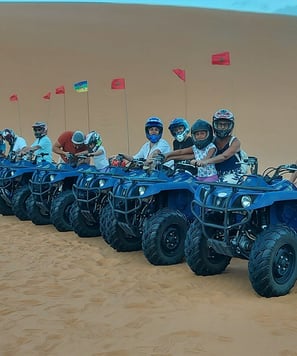

Fes to Marrakech Desert tour 2 days
Experience the best of Fes with our popular tours. From the vibrant markets of Fes to day trips to Chefchaouen, Meknes, and the desert.
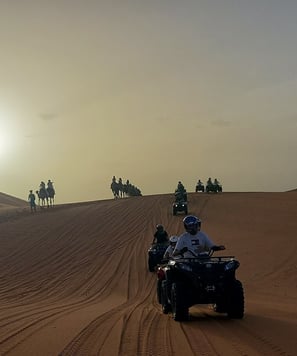

3 days desert tour from Fes to Marrakech
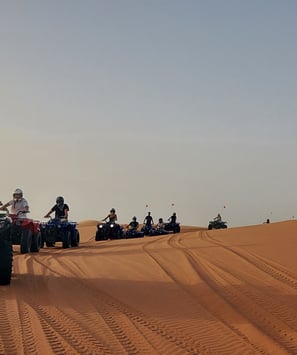

Fes to Marrakech Desert tour 4 days
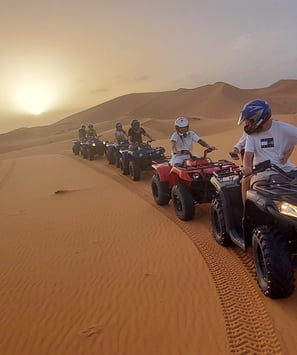

5 days desert tour from fes to marrakech
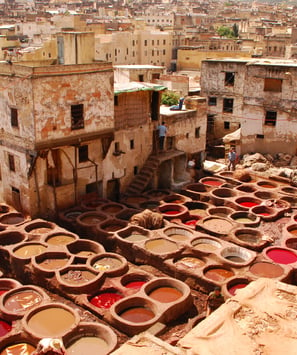

6 Days Morocco Tour From Fes
7 Days Morocco Tour From Fes
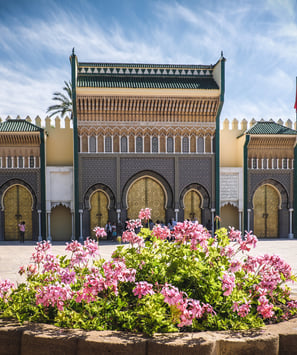

8 Days Morocco Tour From Fes
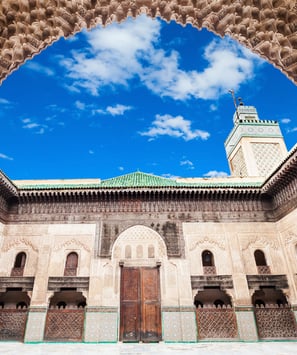

9 Days Morocco Tour From Fes
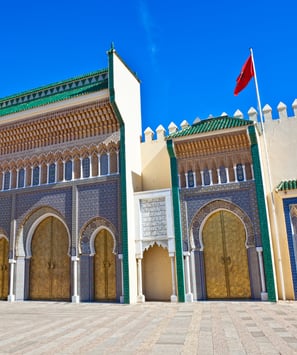

10 Days Morocco Tour From Fes
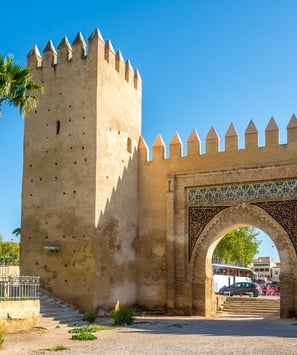

11 Days Morocco Tour From Fes
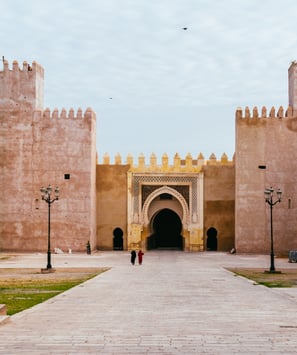

12 Days Tour From Fes
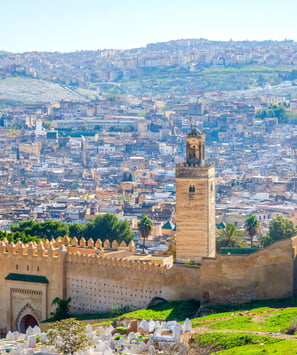

12 Days Tour From Fes
13 Days Tour From Fes to Marrakech
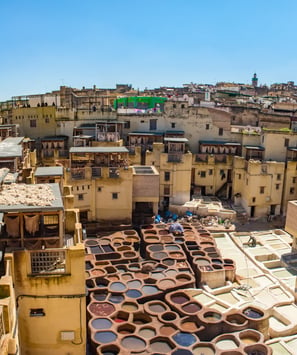

14 Days Tour From Fes to Marrakech
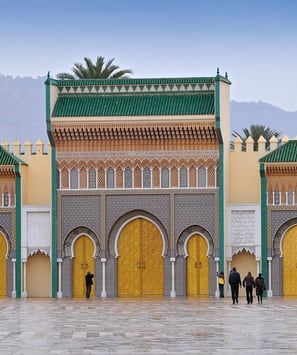

15 Days Tour From Fes to Marrakech
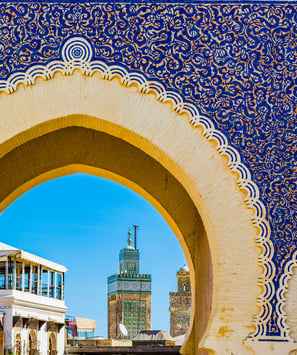

Know Before You Go:
What to Pack for Your Morocco Tour
Embarking on a 9-day adventure through Morocco requires thoughtful packing to ensure comfort and cultural sensitivity across diverse landscapes and climates. Your suitcase should be a carefully curated collection of versatility and practicality, with each item serving multiple purposes on your journey from bustling medinas to serene desert dunes.
Start with clothing that respects local customs while keeping you comfortable in varying temperatures. Lightweight, loose-fitting garments in breathable fabrics are essential. For women, pack long skirts or dresses that fall below the knee, and tops that cover the shoulders. Men should opt for long trousers and collared shirts. A light jacket or sweater is crucial for cool desert nights and air-conditioned spaces. Don't forget a scarf or pashmina – it's not just a fashion statement but a versatile item that can provide sun protection, warmth, or modesty when entering religious sites.
Footwear is paramount on this diverse journey. Bring a pair of sturdy, comfortable walking shoes for exploring ancient medinas and rocky gorges. Pack sandals for warmer days and desert treks, but ensure they're secure enough for uneven terrain. A pair of slip-on shoes is handy for frequent shoe removal when entering homes or religious buildings.
Sun protection is non-negotiable in Morocco's intense climate. Pack a wide-brimmed hat, high-SPF sunscreen, and quality sunglasses. A refillable water bottle is essential to stay hydrated, especially during desert excursions.
For the magical night in the Sahara, pack a small overnight bag to take to the desert camp, leaving your main luggage securely stored. Include warm layers for the cool desert night, basic toiletries, and any medications you might need.
Technology-wise, bring a universal power adapter and consider a portable charger for long days of exploration. A camera is a must to capture the vibrant colors and stunning landscapes, but remember to ask permission before photographing people.
Toiletries should include hand sanitizer, wet wipes, and tissues – public restrooms may not always be well-stocked. Any prescription medications should be packed in your carry-on, along with a basic first-aid kit including remedies for stomach upsets.
For cultural experiences, pack a small notebook and pen for jotting down memories or phrases in Arabic or Berber. A guidebook or downloaded app about Moroccan history and culture can enrich your understanding of the sites you'll visit.
Lastly, leave some space in your luggage for the treasures you'll undoubtedly want to bring home – from aromatic spices to handcrafted textiles. A foldable tote bag can be useful for day trips and as an extra carry-on for your return journey.
Remember, while it's important to be prepared, Morocco's cities offer ample shopping opportunities should you forget anything. Packing light and smart will allow you to move comfortably through your journey, from the narrow alleys of Fes to the wide expanses of the Sahara, ensuring you're always ready for the next Moroccan marvel that awaits.
Cultural Etiquette in Morocco
Navigating the rich tapestry of Moroccan culture requires a delicate blend of respect, awareness, and openness. As you embark on your journey through this enchanting land, embracing local customs will not only deepen your experience but also foster meaningful connections with the warm-hearted Moroccan people.
Greetings form the cornerstone of Moroccan social interactions. Learn the Arabic phrase "As-salaam-alaikum" (peace be upon you) and its response "Wa-alaikum-salaam." These simple words, accompanied by a smile, can open doors to genuine hospitality. Handshakes are common, but wait for the opposite gender to extend their hand first. Some may place their hand over their heart instead – a gesture of respect you can mirror.
Dress modestly to show respect for local traditions. Women should cover shoulders and knees, while men should avoid shorts in public spaces. In more conservative areas, women might consider carrying a scarf to cover their hair when entering religious sites or rural villages. This thoughtful approach to attire will help you blend in and avoid unwanted attention.
Moroccans are renowned for their hospitality, and you may find yourself invited into homes. Remove your shoes before entering, and if offered food or tea, accepting is a sign of appreciation. Using your right hand for eating and passing objects is customary, as the left hand is considered unclean in Islamic culture.
During Ramadan, be mindful of those fasting. Avoid eating, drinking, or smoking in public during daylight hours. Many restaurants cater to tourists, but discretion is appreciated. This holy month offers a unique opportunity to experience Morocco's spiritual side, with lively evenings and festive break-fasts.
Photography etiquette is crucial. Always ask permission before capturing images of people, especially in rural areas where beliefs about photography may differ. Some may request a small payment – this is not unusual and can be a way to support local communities.
In markets and shops, bargaining is expected and can be a enjoyable cultural exchange. Approach it with humor and patience, but remember that aggressive haggling over small amounts can be perceived as disrespectful. Walking away often leads to the best price, but if you've agreed on a price, follow through with the purchase.
Public displays of affection are frowned upon. Couples should remain discreet, limiting physical contact to hand-holding. Same-sex couples should be particularly cautious, as homosexuality is not openly accepted in Morocco.
When visiting mosques, note that many are closed to non-Muslims. Those that welcome visitors have specific entry times and dress codes. Remove shoes, dress modestly, and speak quietly to show respect for worshippers.
Alcohol consumption is limited in Morocco. While available in some hotels and licensed venues, drinking in public is taboo. Respect local customs by keeping any alcohol consumption discreet and moderate.
Lastly, embrace the concept of "Inshallah" (God willing), which you'll hear frequently. It reflects the Moroccan approach to time and planning – flexible and unhurried. Adopting this mindset will help you navigate any delays or changes to plans with grace and understanding.
By observing these cultural nuances, you'll not only show respect for Moroccan traditions but also open yourself to deeper, more authentic experiences. Your efforts to understand and adapt to local customs will be met with appreciation, warmth, and often, invitations to share in the genuine Moroccan way of life.
Moroccan Cuisine: What to Try
Embark on a culinary journey that tantalizes the senses and tells the story of Morocco's rich cultural heritage. Moroccan cuisine, a vibrant tapestry of flavors influenced by Berber, Arabic, Andalusian, and Mediterranean traditions, offers a feast for both the palate and the soul.
Begin your gastronomic adventure with the iconic tagine, a slow-cooked stew named after the conical earthenware pot in which it's prepared. Savor the tender meat – be it lamb, chicken, or beef – infused with a symphony of spices like saffron, cumin, and cinnamon, mingling with preserved lemons, olives, and dried fruits. Each bite is a harmonious blend of sweet and savory, reflecting the complexity of Moroccan culture itself.
No Moroccan meal is complete without couscous, the backbone of North African cuisine. Traditionally served on Fridays, this fluffy semolina dish is typically adorned with succulent meats, vegetables, and a rich broth. Watch in awe as your host effortlessly separates each grain, a technique perfected over generations.
For a quick street food fix, seek out a steaming bowl of harira. This hearty tomato-based soup, brimming with lentils, chickpeas, and tender meat, is a Ramadan staple but enjoyed year-round. Pair it with a sticky-sweet chebakia, a sesame and honey cookie that perfectly balances the soup's savory notes.
Adventurous eaters must try pastilla, a delicate pastry that epitomizes Morocco's penchant for combining sweet and savory. Traditionally made with pigeon (now often substituted with chicken), this dish layers spiced meat with crushed almonds and eggs, all wrapped in paper-thin warka pastry and dusted with cinnamon and powdered sugar.
As you wander through bustling medinas, let your nose guide you to hole-in-the-wall bakeries offering fresh khobz. This round, flattish bread is the perfect vehicle for scooping up zalook (smoky eggplant salad) or a robust shakshuka (eggs poached in spicy tomato sauce).
Cool off from the Moroccan heat with a glass of freshly squeezed orange juice or, for a more unique experience, try almond milk mixed with orange flower water. For a savory refreshment, order a glass of leben, a tangy fermented milk that's both refreshing and probiotic-rich.
No culinary exploration of Morocco is complete without indulging in its famous mint tea. Watch as your host pours this sweet, fragrant beverage from great heights, aerating the tea and creating a frothy top. This ceremony is not just about the drink but a symbol of Moroccan hospitality and friendship.
For those with a sweet tooth, Moroccan desserts offer a delightful end to any meal. Try kaab el ghzal ("gazelle horns"), crescent-shaped cookies filled with almond paste and scented with orange flower water. Or indulge in sfenj, Moroccan doughnuts often enjoyed for breakfast, dipped in honey or sprinkled with sugar.
Seafood lovers should head to coastal towns to sample the day's catch, grilled to perfection and served with a zesty chermoula sauce. In Essaouira, don't miss the opportunity to try sardines, a local specialty that showcases the bounty of Morocco's Atlantic waters.
As you traverse the country, notice how flavors shift with the landscape. In the north, you might find traces of Spanish influence, while the southern regions offer dishes infused with Saharan spices. Each meal is an opportunity to delve deeper into Morocco's cultural mosaic, a chance to connect with centuries of tradition through the universal language of food.
Remember, eating in Morocco is a social affair. Embrace the communal aspect of dining, share dishes with fellow travelers, and don't be surprised if you're invited to join a local family for a meal. These moments around the table, breaking bread and barriers, often become the most cherished memories of a Moroccan journey.
Photography Tips for Your Morocco Adventure
Morocco, with its kaleidoscope of colors, intricate architecture, and diverse landscapes, is a photographer's paradise. Capturing the essence of this enchanting country requires not only technical skill but also cultural sensitivity and an eye for the extraordinary in the everyday. Here's how to ensure your photographs do justice to the visual feast that is Morocco.
First, embrace the golden hours. The soft, warm light of early morning and late afternoon transforms Morocco's already stunning scenery into something truly magical. Plan to be at key locations like the Sahara dunes, the blue streets of Chefchaouen, or the bustling Djemaa el-Fna square during these times. The play of light and shadow will add depth and drama to your images.
When photographing Morocco's vibrant markets and medinas, consider using a fast prime lens. The wide aperture will allow you to capture the energy of the souks even in low light conditions, while also creating a beautiful bokeh effect that separates your subject from the busy background. Don't be afraid to increase your ISO in these dimly lit areas – modern cameras handle noise well, and a slightly grainy image is preferable to a blurry one.
For landscape photography, particularly in the vast expanses of the Sahara or the rugged Atlas Mountains, a wide-angle lens is indispensable. It will allow you to capture the immense scale of these natural wonders. Consider using a polarizing filter to enhance the already vivid blue of the Moroccan sky and to cut through any haze.
When it comes to photographing people, remember that Morocco is a country where many individuals have reservations about being photographed. Always ask for permission before taking someone's picture, especially in more rural areas. Learning a few phrases in Arabic or Berber to ask politely can go a long way. If someone declines, respect their wishes. Often, taking the time to engage in conversation first can lead to more authentic and willing subjects.
Moroccan architecture, with its intricate tilework and ornate doorways, offers endless photographic opportunities. Look for symmetry and patterns, and don't be afraid to get close to capture the details. A macro lens can be particularly useful for photographing the fine craftsmanship of Moroccan artisans.
In cities like Fes and Marrakech, rooftop viewpoints provide stunning panoramas. Scout out these locations in advance and consider revisiting them at different times of day to capture the changing light and atmosphere. A sturdy tripod will be essential for low-light cityscape shots.
When photographing the desert, be prepared for challenging conditions. Protect your gear from sand with a good quality camera bag and bring plenty of cleaning supplies. The extreme contrast between bright sand and dark shadows can fool your camera's meter, so consider bracketing your exposures or shooting in RAW for more flexibility in post-processing.
Don't forget to capture the small details that make Morocco unique – the stack of colorful babouche slippers in a market stall, the steam rising from a glass of mint tea, or the intricate henna designs adorning a bride's hands. These intimate shots often convey the essence of Moroccan culture more powerfully than grand vistas.
Lastly, while it's important to capture beautiful images, remember to also put the camera down occasionally. Some of Morocco's most magical moments – the haunting call to prayer echoing through ancient medinas, the scent of spices wafting through the air, or the warmth of Moroccan hospitality – can't be captured on film. Take time to fully immerse yourself in these experiences, and you'll find that your photographs, when you do take them, will be infused with a deeper understanding and appreciation of this extraordinary country.
By following these tips and approaching photography with respect and creativity, you'll return home with a collection of images that not only showcase Morocco's visual splendor but also tell the story of your unique journey through this captivating land.
Sustainable Travel in Morocco
As you embark on your Moroccan adventure, consider the impact of your journey on this enchanting land and its people. Sustainable travel in Morocco isn't just about minimizing your environmental footprint; it's about fostering meaningful connections, supporting local communities, and preserving the rich cultural heritage that makes this country so captivating.
Begin by choosing accommodations that prioritize sustainability. Opt for riads or guesthouses that employ local staff, use renewable energy sources, and implement water conservation practices. Many eco-lodges in the Atlas Mountains or on the fringes of the Sahara offer immersive experiences while maintaining a commitment to environmental stewardship. By staying in these places, you're directly contributing to local economies and supporting responsible tourism initiatives.
When exploring Morocco's mesmerizing medinas and souks, shop thoughtfully. Seek out artisans who create traditional crafts using time-honored techniques. By purchasing directly from these skilled craftspeople, you're not only acquiring authentic souvenirs but also helping to preserve Morocco's rich artistic heritage. Look for cooperatives, particularly those run by women, which often reinvest profits into community development projects.
Be mindful of water consumption, especially in desert regions where this precious resource is scarce. Take short showers, reuse towels, and avoid single-use plastics by carrying a reusable water bottle. Many riads and hotels now offer water refill stations, making it easy to stay hydrated without contributing to plastic waste.
When venturing into natural areas, adhere to the principles of "Leave No Trace." This is particularly crucial in fragile desert ecosystems. Stick to designated trails, refrain from disturbing wildlife, and pack out all waste. Consider joining local clean-up initiatives – many tour operators now offer the opportunity to participate in beach or desert clean-ups as part of their itineraries.
Embrace slow travel whenever possible. Instead of rushing from one destination to the next, spend more time in fewer places. This approach not only reduces your carbon footprint but also allows for deeper cultural immersion and more meaningful interactions with local communities. Consider using public transportation for longer journeys – Morocco's train network is extensive and offers a chance to travel alongside locals.
Support community-based tourism initiatives, particularly in rural areas. Many villages in the Atlas Mountains or along the coast offer homestays or guided experiences led by local residents. These programs provide vital income to remote communities while offering travelers authentic insights into traditional Moroccan life.
Be conscious of your energy use. Many areas of Morocco experience regular power shortages, especially during summer months. Turn off lights and air conditioning when leaving your room, and consider using fans instead of air conditioning where possible.
Respect local customs and dress codes. By dressing modestly and behaving in a culturally sensitive manner, you're showing respect for Moroccan traditions and helping to preserve the authentic character of the places you visit.
When it comes to wildlife encounters, choose ethical experiences. Avoid riding camels or horses that appear undernourished or mistreated. If visiting a wildlife sanctuary, ensure it prioritizes animal welfare over tourist entertainment.
Learn a few phrases in Arabic or Berber. Making an effort to communicate in local languages not only enhances your travel experience but also demonstrates respect for Moroccan culture. This simple act can open doors to more genuine interactions and cultural exchanges.
Finally, consider giving back to the communities you visit. Many reputable tour operators partner with local NGOs working on social and environmental projects. Whether it's supporting education initiatives, women's cooperatives, or conservation efforts, your contribution can have a lasting positive impact.
By embracing these sustainable travel practices, you're not just being a responsible tourist; you're becoming a thoughtful guest in Morocco's home. Your journey becomes a force for positive change, ensuring that the magic of Morocco – its stunning landscapes, rich culture, and warm hospitality – endures for generations of travelers to come.
Accommodations: From Riads to Desert Camps
Your journey through Morocco is as much about where you lay your head at night as it is about the sights you see during the day. From the labyrinthine medinas of imperial cities to the vast expanse of the Sahara, Morocco offers a diverse array of accommodations that are destinations in themselves, each providing a unique lens through which to experience the country's rich culture and stunning landscapes.
In the heart of ancient cities like Fes and Marrakech, traditional riads reign supreme. These historic mansions, built around a central courtyard, offer an oasis of tranquility amidst the bustling medinas. Step through the unassuming street door and enter a world of intricate tilework, carved cedar ceilings, and bubbling fountains. Many riads have been lovingly restored, blending original architectural features with modern comforts. Rooftop terraces provide panoramic views of minarets and mountains, perfect for sipping mint tea at sunset. Choose a riad for an intimate, authentic experience that immerses you in the rhythm of Moroccan life.
Venturing into the Atlas Mountains, kasbah-style hotels offer a glimpse into Morocco's Berber heritage. These fortified earthen structures, perched dramatically on hillsides, have been transformed into comfortable retreats without losing their historic charm. Rooms often feature traditional Berber textiles and artifacts, while terraces offer breathtaking views of snow-capped peaks or lush valleys. Many kasbahs also serve as bases for hiking, allowing you to explore the surrounding villages and experience the warm hospitality of mountain communities.
For a taste of colonial-era glamour, consider staying in a palace hotel. Cities like Tangier and Casablanca boast grand establishments that harken back to Morocco's days as an international crossroads. Think art deco interiors, lush gardens, and a guest list that might once have included spies and literary figures. While offering all the amenities of a modern luxury hotel, these properties allow you to step back in time and indulge in a bit of nostalgic romance.
As you journey towards the Sahara, desert camps provide an unforgettable experience under the vast Moroccan sky. Ranging from simple Berber-style tents to luxurious glamping setups, these camps offer a chance to connect with the timeless rhythms of desert life. Fall asleep to the sound of traditional music around the campfire and wake to a spectacular sunrise over the dunes. Many camps offer activities like camel treks, sandboarding, or stargazing sessions with local guides, making your stay an immersive desert adventure.
In coastal towns like Essaouira, restored merchant houses now serve as charming guesthouses. Often featuring a mix of Moroccan and European design elements, these properties reflect the town's multicultural history. Sea-view rooms let you fall asleep to the sound of Atlantic waves, while inner courtyards provide sunny spots for breakfast or an afternoon read.
For those seeking modern comforts, Morocco's cities also offer international-brand hotels and sleek, design-forward boutique properties. These can be good options for business travelers or those preferring familiar amenities. However, even these often incorporate Moroccan design elements and offer locally inspired experiences, ensuring you don't miss out on the country's unique character.
Eco-lodges are gaining popularity, particularly in rural areas. These sustainably built and operated properties often work closely with local communities, offering a chance to experience traditional rural life while minimizing your environmental impact. From adobe cottages in oasis towns to stone lodges in national parks, these accommodations allow you to connect deeply with Morocco's natural landscapes and traditional ways of life.
Regardless of where you choose to stay, Moroccan hospitality is legendary. Expect warm welcomes, attentive service, and often, impromptu lessons in local culture from proud and knowledgeable staff. Many properties offer experiences like cooking classes, craft workshops, or guided neighborhood tours, further enriching your stay.
Remember, in Morocco, your accommodation is more than just a place to sleep – it's an integral part of your journey, offering unique insights into the country's history, culture, and natural beauty. Choose wisely, and let each night's stay add another layer to your Moroccan adventure.
Transportation During Your Tour
Navigating Morocco's diverse landscapes is an adventure in itself, with each mode of transport offering a unique perspective on this captivating country. From winding mountain roads to vast desert expanses, your journey through Morocco will be as varied as the terrain you traverse.
Your 9-day tour typically begins with a comfortable, air-conditioned private vehicle. This allows for flexibility in your itinerary and the ability to stop at will for photos or impromptu explorations. Your driver, often doubling as a knowledgeable guide, becomes a window into local life, sharing insights and stories as you wind through ancient medinas and over mountain passes. The vehicle, usually a spacious 4x4 or minivan, is well-equipped to handle Morocco's varied road conditions, from smooth highways to rugged desert tracks.
As you venture into the labyrinthine medinas of Fes or Marrakech, you'll transition to the most authentic form of transport – your own two feet. Walking tours through these car-free zones allow you to fully immerse yourself in the sensory overload of sights, sounds, and smells that define Moroccan city life. Comfortable shoes are essential as you navigate narrow alleys and bustling souks.
In the Sahara, prepare for a transport highlight – the iconic camel trek. Mounting these "ships of the desert," you'll sway across golden dunes, the rhythmic movement a meditation in itself. While not the most comfortable ride, the experience is unparalleled, offering a glimpse into the traditional Bedouin way of life. For those less inclined to ride, many camps also offer 4x4 transfers to your desert accommodation.
The journey through the Atlas Mountains presents some of the most spectacular drives of your tour. The winding roads offer breathtaking vistas at every turn, with your skilled driver navigating hairpin bends with ease. Occasional stops at panoramic viewpoints allow you to fully appreciate the majestic landscape and perhaps interact with local Berber communities.
In some cities, you might experience a ride in a traditional horse-drawn carriage, known as a calèche. Popular in Marrakech, these charming conveyances offer a romantic way to tour the city's wide boulevards and lush gardens, the clip-clop of hooves adding a nostalgic soundtrack to your journey.
For longer distances not covered by your private transfer, Morocco's rail network is a comfortable and efficient option. The train ride from Fes to Marrakech, for example, offers a chance to relax and watch the diverse Moroccan landscape unfold outside your window. First-class compartments provide air-conditioning and assigned seats, making for a pleasant journey.
In coastal towns like Essaouira, don't miss the chance to take a boat trip. Whether it's a sunset cruise or a fishing excursion, seeing Morocco from the water provides yet another perspective on its beauty and diversity.
For the adventurous, some tours might include options for mountain biking in the Atlas foothills or quad biking in the desert. These exhilarating experiences allow you to cover more ground while enjoying an adrenaline rush.
Throughout your journey, you'll encounter Morocco's unique take on public transport. While not typically part of a guided tour, witnessing the organized chaos of a grand taxi stand or the efficiency of a local bus network adds color to your travel experience.
Remember, in Morocco, the journey is often as enriching as the destination. Each mode of transport peels back another layer of this complex and fascinating country. From the meditative sway of a camel to the wind in your hair on a mountain road, the ways you move through Morocco will form an integral part of your memories. Embrace each transition, for in the changing rhythms of your journey lies the true pulse of Moroccan travel.
Shopping in Morocco: Souvenirs and Artisanal Crafts
Stepping into a Moroccan souk is like entering Aladdin's cave – a sensory explosion of colors, scents, and textures that will awaken your inner treasure hunter. Shopping in Morocco is not just a transaction; it's a cultural experience, a chance to engage with centuries-old craftsmanship and bring home a piece of this enchanting land.
Begin your shopping adventure in the labyrinthine medinas of Fes or Marrakech, where every twist and turn reveals new wonders. The air is thick with the scent of leather from tanneries dating back to medieval times. Here, you can watch artisans at work and purchase exquisitely crafted leather goods – from butter-soft babouche slippers to intricately tooled bags and wallets. Remember, the pungent smell of the tanneries is part of the authentic experience!
As you wander deeper into the souk, you'll encounter a rainbow of hand-woven textiles. Berber rugs, with their bold geometric patterns and rich colors, tell the story of the weaver's tribe and life experiences. Each one is unique, a true work of art that can transform any space. Don't shy away from smaller textiles like vibrant kilim pillowcases or delicate hand-embroidered table linens – they're easier to transport and no less authentic.
The metalworkers' quarter reverberates with the rhythmic tapping of hammers on copper and brass. Here, you'll find everything from ornate teapots and trays to intricate lanterns that cast mesmerizing patterns when lit. These pieces not only serve as beautiful decorations but also as functional reminders of Moroccan hospitality.
No shopping trip in Morocco is complete without exploring the spice markets. Towering cones of vibrant spices perfume the air – saffron, cumin, cinnamon, and the complex blend of ras el hanout. Purchase some to take home, and you'll be able to recreate the flavors of Morocco in your own kitchen. Many spice vendors also offer natural beauty products like argan oil and rose water, perfect for a touch of Moroccan luxury in your daily routine.
For a truly unique souvenir, seek out the woodcarvers' workshops. Watch as skilled hands transform cedar and thuya wood into intricate boxes, chess sets, and decorative items. The sweet scent of the wood will linger, evoking memories of your Moroccan adventure long after you've returned home.
Ceramics enthusiasts will find paradise in the pottery quarters. From vibrant tagine pots to delicate blue and white Fes pottery, each piece showcases the geometric patterns and calligraphy that are hallmarks of Islamic art. Ceramic tiles, or zellij, make for stunning decorative pieces and are more portable than larger items.
As you shop, remember that bargaining is not just accepted but expected. It's a friendly exchange, a dance of negotiations that often ends with mint tea and laughter. Start by offering about half the stated price and work your way up. The final price should feel fair to both you and the seller.
Be mindful of quality and authenticity. While mass-produced items exist, seek out workshops where you can see artisans at work. Not only does this ensure you're getting genuine handcrafted items, but it also allows you to appreciate the skill and tradition behind each piece.
For those short on luggage space, consider smaller items that pack a big cultural punch. Handcrafted jewelry, like Berber silver with intricate engravings or colorful beaded necklaces, captures the essence of Moroccan design. Traditional musical instruments such as small drums or qraqeb (metal castanets) make for unique decorative pieces and can bring the rhythms of Morocco into your home.
As you make your purchases, take a moment to appreciate the stories behind each item. That carpet you're eyeing might have taken months to weave, the pattern passed down through generations. The bronze lamp you're haggling over is the result of techniques refined over centuries. By choosing authentic, handcrafted items, you're not just buying souvenirs; you're helping to preserve Morocco's rich artistic heritage.
Remember, the best souvenirs are often the ones that capture a moment or a feeling. Perhaps it's the scent of orange blossom that reminds you of a peaceful riad courtyard, or the smooth texture of a pottery bowl that takes you back to a memorable meal. Let your senses guide you, and you'll return home with treasures that truly represent your unique Moroccan journey.
Safety Tips for Travelers in Morocco
Embarking on a Moroccan adventure promises a tapestry of unforgettable experiences, but like any journey to a foreign land, it's essential to weave in a thread of caution. While Morocco is generally a safe destination for travelers, a dash of street smarts and cultural awareness will ensure your tale is one of wonder rather than woe.
First and foremost, embrace the art of blending in. Morocco's vibrant streets invite exploration, but they also call for discretion. Dress modestly, respecting local customs – this not only shows cultural sensitivity but also helps you avoid unwanted attention. Ladies, a flowing scarf can be your best friend, offering versatile coverage when needed.
In the labyrinthine medinas, where ancient alleys twist and turn like a riddler's dream, stay alert but not alarmed. Pickpockets, like in any tourist hotspot, may see you as an opportunity. Keep your valuables close, perhaps in a hidden money belt, and avoid flashing expensive jewelry or electronics. When navigating the souks, a firm "La shukran" (No, thank you) will usually suffice to deter persistent vendors.
The symphony of Moroccan hospitality often includes invitations for tea or to visit shops. While many are genuine, some may lead to high-pressure sales tactics. Trust your instincts – if an offer feels too good to be true, it likely is. Polite but firm refusal is your shield against unwanted situations.
When the call to prayer echoes across the city, remember that mosques are sacred spaces. Unless explicitly invited, non-Muslims should admire these architectural marvels from the outside. Respect for religious customs extends to Ramadan – if your visit coincides with this holy month, be mindful of eating or drinking in public during daylight hours.
Moroccan cuisine is a sensory delight, but caution is the best appetizer. Stick to bottled water and ensure any fresh produce has been washed with purified water. Street food can be tempting, but opt for busy stalls where locals gather – high turnover usually means fresher fare.
As you traverse this land of contrasts, from bustling cities to serene deserts, transportation safety is key. If hailing a taxi, agree on the fare before setting off, or insist on using the meter. For longer journeys, reputable tour companies or official bus services are your safest bet.
The Sahara's siren call is irresistible, but desert adventures require extra vigilance. Stick with licensed guides, stay hydrated, and protect yourself from the sun's fierce embrace. If camping, ensure your tour operator follows safety protocols – the desert's beauty can quickly turn harsh for the unprepared.
In matters of health, preparation is your best medicine. Pack a basic first-aid kit, including remedies for stomach upsets. If you require prescription medications, bring an ample supply along with a doctor's note. Travel insurance isn't just advisable; it's essential for peace of mind.
While Morocco's natural beauty beckons, some areas near the Algerian border are best avoided due to political sensitivities. Stick to well-trodden tourist paths unless you're with a knowledgeable local guide.
Digital safety deserves attention too. Public Wi-Fi networks can be a hacker's playground, so avoid accessing sensitive information unless you're using a trusted VPN. Keep digital copies of important documents stored securely online, separate from your physical copies.
For solo female travelers, Morocco offers rich experiences but may also present unique challenges. Trust your intuition, be assertive in setting boundaries, and consider joining group tours for certain activities. Many women find that dressing conservatively and wearing a wedding ring (real or not) can deter unwanted advances.
Remember, Moroccan authorities take tourist safety seriously. In the unlikely event of an emergency, dial 190 for police assistance. Most tourist areas have a visible police presence, and officers are generally helpful to visitors.
Lastly, the most valuable safety tip is also the simplest – smile. Moroccans are renowned for their warmth and hospitality. A friendly demeanor, coupled with respect for local customs, will often be reciprocated with kindness and assistance, turning potential challenges into opportunities for cultural connection.
By weaving these safety threads into the fabric of your Moroccan journey, you'll be free to fully immerse yourself in the country's magic, creating memories that shimmer with adventure rather than anxiety.
Best Time to Visit Morocco
Morocco, a land of diverse landscapes and rich cultural tapestry, offers a year-round allure, but choosing the perfect moment for your adventure can transform a great trip into an unforgettable odyssey. Like a master weaver selecting the finest threads, timing your visit requires careful consideration of climate, festivals, and personal preferences.
Spring (March to May) emerges as the golden season for many travelers. As the country shakes off winter's chill, a riot of wildflowers carpets the landscape, from the Atlas Mountains to the edges of the Sahara. The weather strikes a harmonious balance – warm enough for comfortable exploration, yet cool enough to prevent the oppressive heat that summer brings. This is the ideal time for hiking in the Atlas, where snow-capped peaks provide a stunning backdrop to verdant valleys. Coastal cities like Essaouira offer pleasant breezes and fewer crowds, perfect for leisurely strolls along ancient ramparts.
Autumn (September to November) mirrors spring's appeal, with comfortable temperatures and clear skies. The scorching heat of summer retreats, leaving behind perfect conditions for desert excursions. Witness the date harvest in the oases, a time-honored tradition that sweetens the air and palates alike. The cultural calendar comes alive with festivals – the Tafraoute Almond Blossom Festival in February paints the Anti-Atlas in delicate pink, while October's Erfoud Date Festival celebrates the desert's bounty with music, dance, and, of course, an abundance of dates.
For the heat-seekers and sun-worshippers, summer (June to August) beckons. While inland cities like Marrakech and Fes can become furnaces, this is the season when coastal towns truly shine. The beaches of Agadir and Taghazout become playgrounds for surfers and sunseekers. If you do brave the interior during these months, you'll find fewer tourists competing for that perfect photo of the Hassan II Mosque or haggling in the souks of Fes. Just remember to pace yourself, seek shade, and hydrate frequently.
Winter (December to February) offers its own unique charms. The crowds thin, prices drop, and a serene atmosphere settles over the country. Snow dusts the Atlas Mountains, creating a skier's paradise in unexpected terrain. This is the perfect season for exploring imperial cities like Meknes and Rabat, where crisp days give way to cozy evenings by the fire in centuries-old riads. The Sahara, while chilly at night, offers pleasant daytime temperatures for camel treks and stargazing.
Religious observances add another layer to consider. Ramadan, the Islamic month of fasting, sees a shift in daily rhythms. While this can mean reduced business hours and a quieter atmosphere during the day, nights come alive with festive iftars (breaking of the fast) that offer a unique cultural immersion. The exact dates vary each year, so check the lunar calendar when planning.
For photography enthusiasts, the shoulder seasons of spring and autumn offer the most captivating light. The low angle of the sun during these months bathes ancient kasbahs and rolling dunes in a golden glow, creating perfect conditions for capturing Morocco's visual splendor.
Nature lovers might time their visit to witness specific phenomena. March brings the spectacle of flamingos nesting in the lagoons near Oualidia, while autumn sees the arrival of migratory birds in wetlands across the country.
Ultimately, the best time to visit Morocco is when your heart calls you there. Each season unveils a different facet of this multifaceted gem. Spring and autumn may offer the most balanced experience, but there's magic to be found year-round. Whether you're seeking the vibrant energy of festival season, the tranquil beauty of snow-dusted mountains, or the sun-soaked adventures of a coastal summer, Morocco awaits, ready to weave your visit into the rich tapestry of its timeless allure.
Extending Your Stay: Optional Add-ons to Your Tour
As your 9-day Moroccan odyssey draws to a close, you might find yourself yearning for more of this enchanting land. Fear not, intrepid traveler, for Morocco's tapestry of experiences extends far beyond the confines of your initial itinerary. Consider these enticing add-ons to weave additional threads of adventure into your journey.
For those whose souls have been stirred by the Sahara, venture further into the desert's embrace with an extended stay in Merzouga. Immerse yourself in Berber culture with a multi-day desert trek, sleeping under the stars and waking to sunrise over the dunes. Learn the art of bread baking in the sand, master the rhythms of traditional drumming, and let the vast silence of the desert work its transformative magic on your spirit.
Beach lovers can chase the perfect wave in Taghazout, Morocco's surfing mecca. Whether you're a seasoned pro or a curious novice, the consistent breaks and laid-back vibe offer the ideal setting to ride the Atlantic swells. Yoga retreats in this coastal paradise provide a holistic way to unwind and reflect on your Moroccan adventures.
For a deeper dive into Morocco's imperial past, extend your stay in Meknes or venture to Rabat. These less-visited royal cities offer a quieter, more authentic experience of urban Morocco. Explore the grand gates and palaces of Meknes, or wander the blue-and-white alleys of Rabat's Kasbah des Oudaias, where time seems to stand still.
Nature enthusiasts and hikers will find paradise in Toubkal National Park. Add a few days to trek the High Atlas, culminating in an ascent of Jebel Toubkal, North Africa's highest peak. Along the way, stay in remote Berber villages, where traditional life continues much as it has for centuries. The panoramic views from the summit, stretching across Morocco's diverse landscape, offer a fitting climax to your journey.
For a complete change of pace, consider a cooking retreat in the countryside near Marrakech. Spend days in an organic farm, learning the secrets of Moroccan cuisine from master chefs. From selecting ingredients in local markets to mastering the art of the perfect tagine, you'll gain skills to bring the flavors of Morocco back to your own kitchen.
History buffs and archaeology enthusiasts should not miss Volubilis, the best-preserved Roman ruins in Morocco. While you may have glimpsed it on your main tour, an extended visit allows time to truly appreciate the intricate mosaics and grand architecture of this ancient city. Combine it with a stay in the nearby holy town of Moulay Idriss for a journey deep into Morocco's layered past.
For those seeking serenity, the blue-washed streets of Chefchaouen beckon. Nestled in the Rif Mountains, this picturesque town offers a peaceful counterpoint to the bustling cities you've explored. Wander the azure alleys, hike in the surrounding hills, and let the relaxed rhythm of mountain life wash over you.
Wildlife lovers can add an excursion to Souss-Massa National Park, a haven for birdwatchers and a vital habitat for the endangered Northern Bald Ibis. Guided tours offer the chance to spot flamingos, marbled ducks, and a host of other species in this unique ecosystem where the desert meets the sea.
For a truly immersive cultural experience, consider a homestay in a rural village. Whether in the Atlas Mountains or the countryside around Fes, living with a local family offers unparalleled insights into traditional Moroccan life. Help with daily chores, learn ancestral crafts, and forge connections that transcend language and cultural barriers.
Wellness seekers might extend their stay with a visit to the thermal baths of Moulay Yacoub. These healing waters, known since Roman times, offer a soothing end to your Moroccan adventure. Combine it with traditional hammam treatments and massages for the ultimate in relaxation and rejuvenation.
Remember, each of these extensions isn't just an add-on to your trip; it's an opportunity to delve deeper into the heart of Morocco, to uncover layers of experience that might otherwise remain hidden. Whether you choose to soar above the dunes in a hot air balloon, meditate in a mountain retreat, or lose yourself in the artisan quarters of a less-visited city, these additional adventures will ensure your Moroccan tale continues long after the last page of your original itinerary has turned.
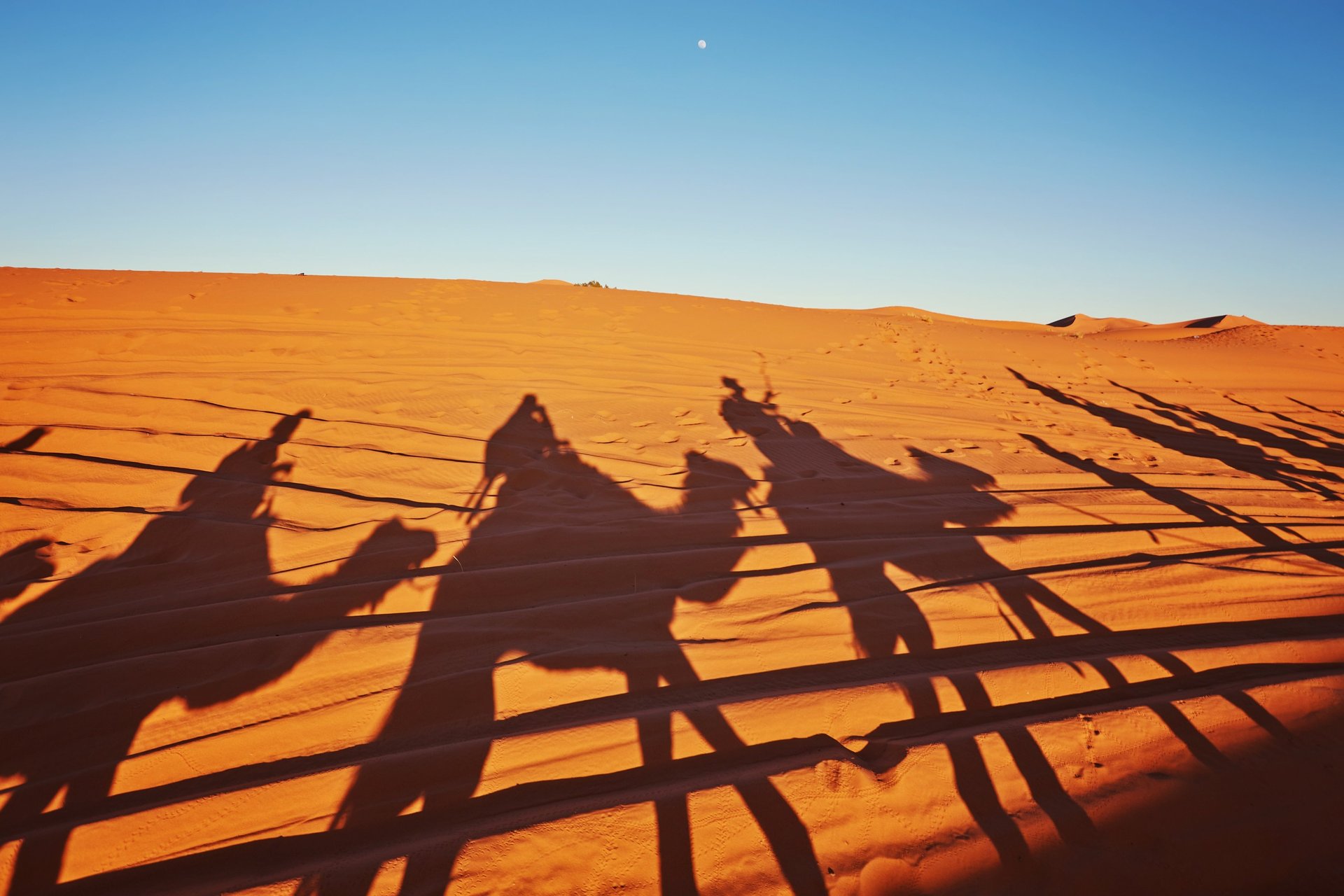
Get in touch
Please use the form below to email us, and we’ll respond as quickly as possible. If you don’t hear from us within 24 hours, feel free to send a WhatsApp message or call us at +212625473756. We look forward to connecting with you!
Address
N 45, Hay El Qods Rue 06, Rissani 52450. Morocco
Contact Us
Our Services
Tangier Tours
Agadir Tours
Hot Air Balloon
Sandboarding
Camel Trekking
Merzouga Horse Riding
Quad Biking
4x4 Desert Safaris
Photography Tours
Desert Camping


